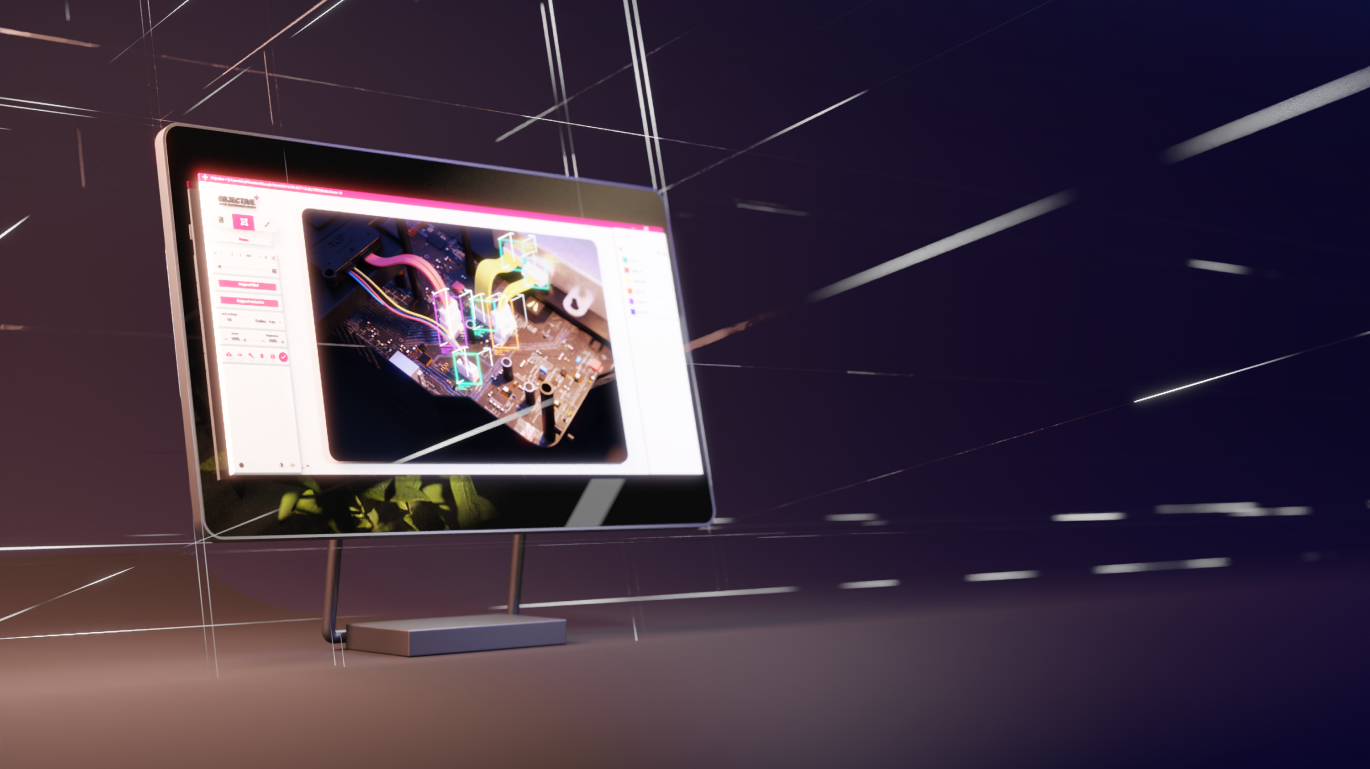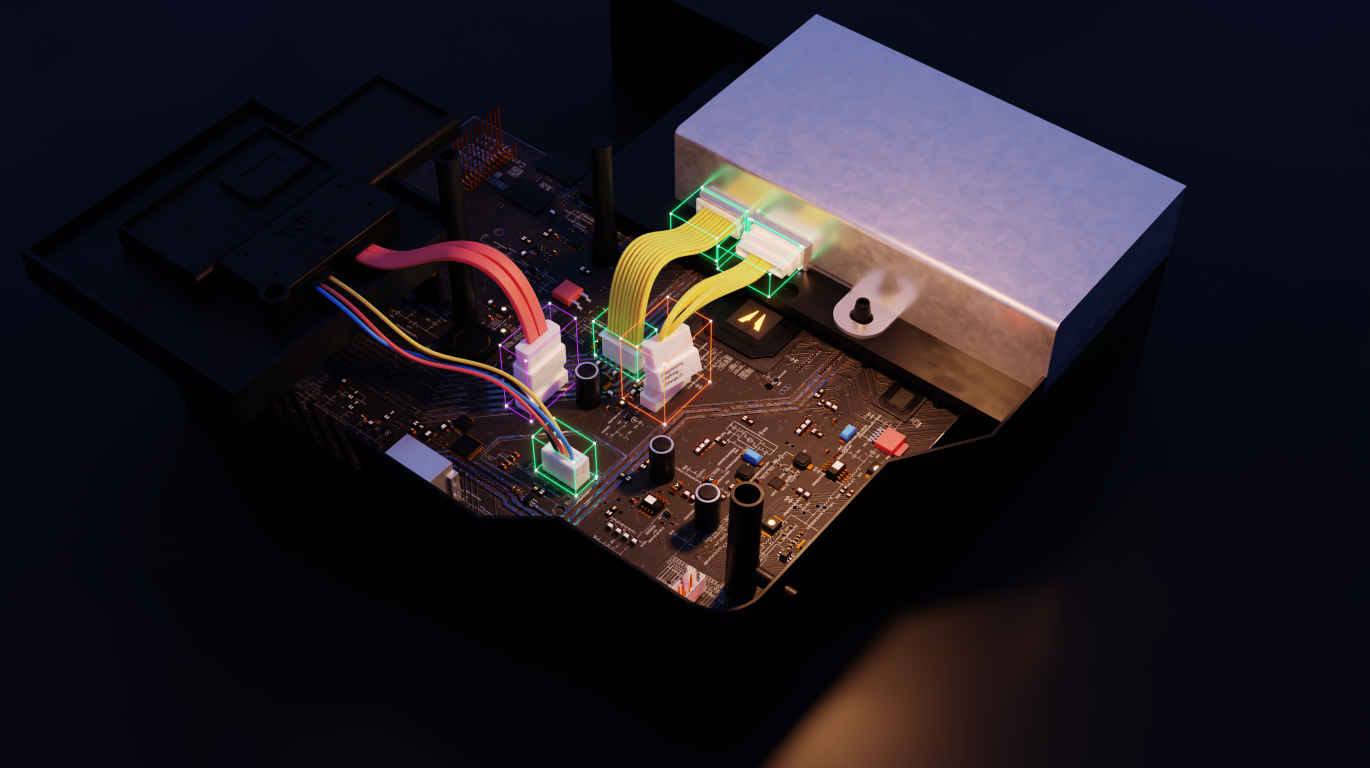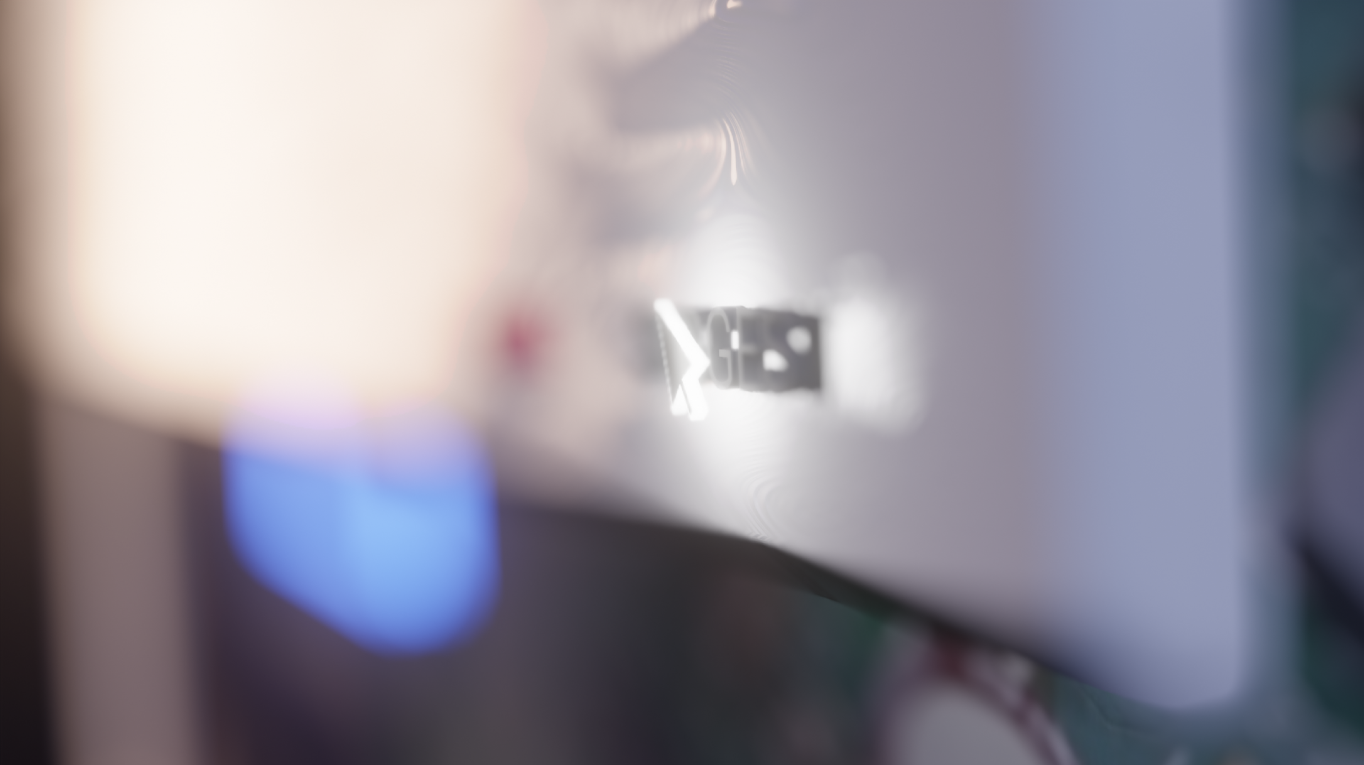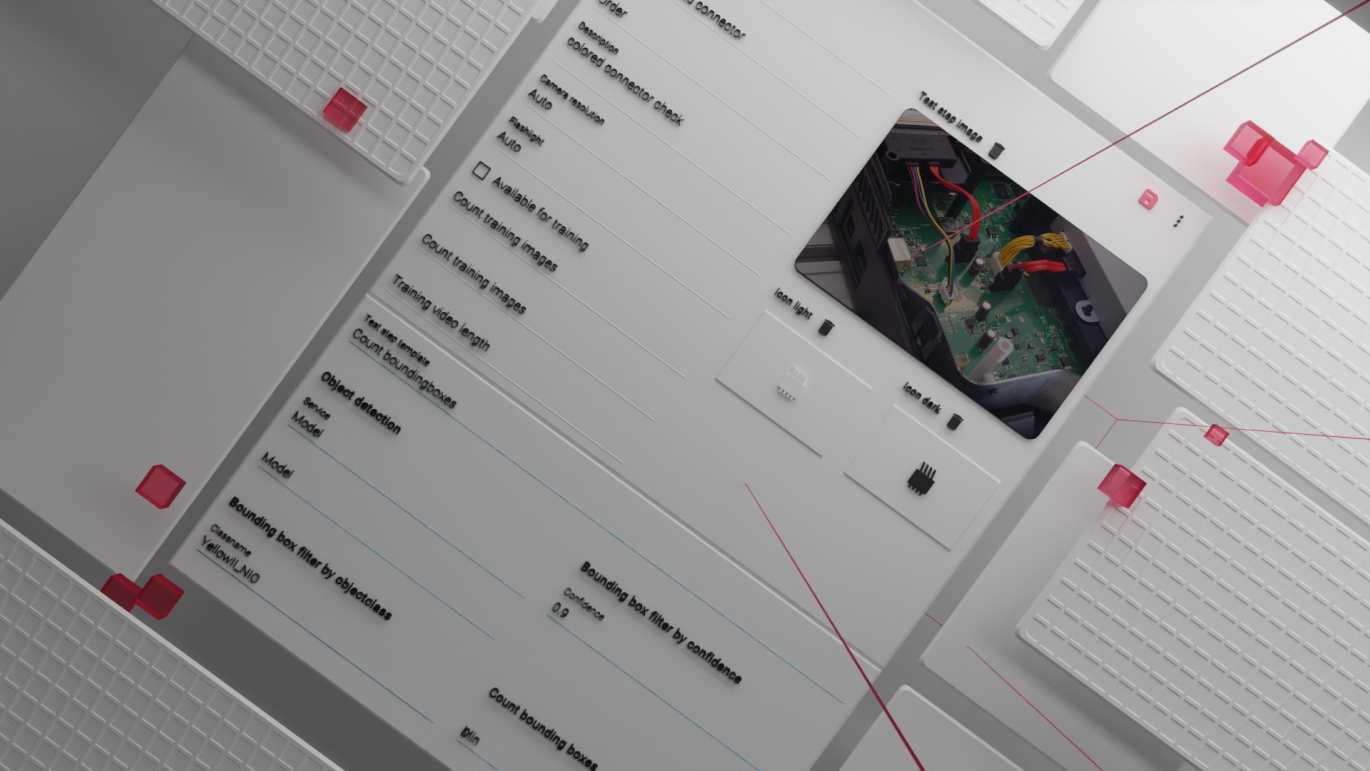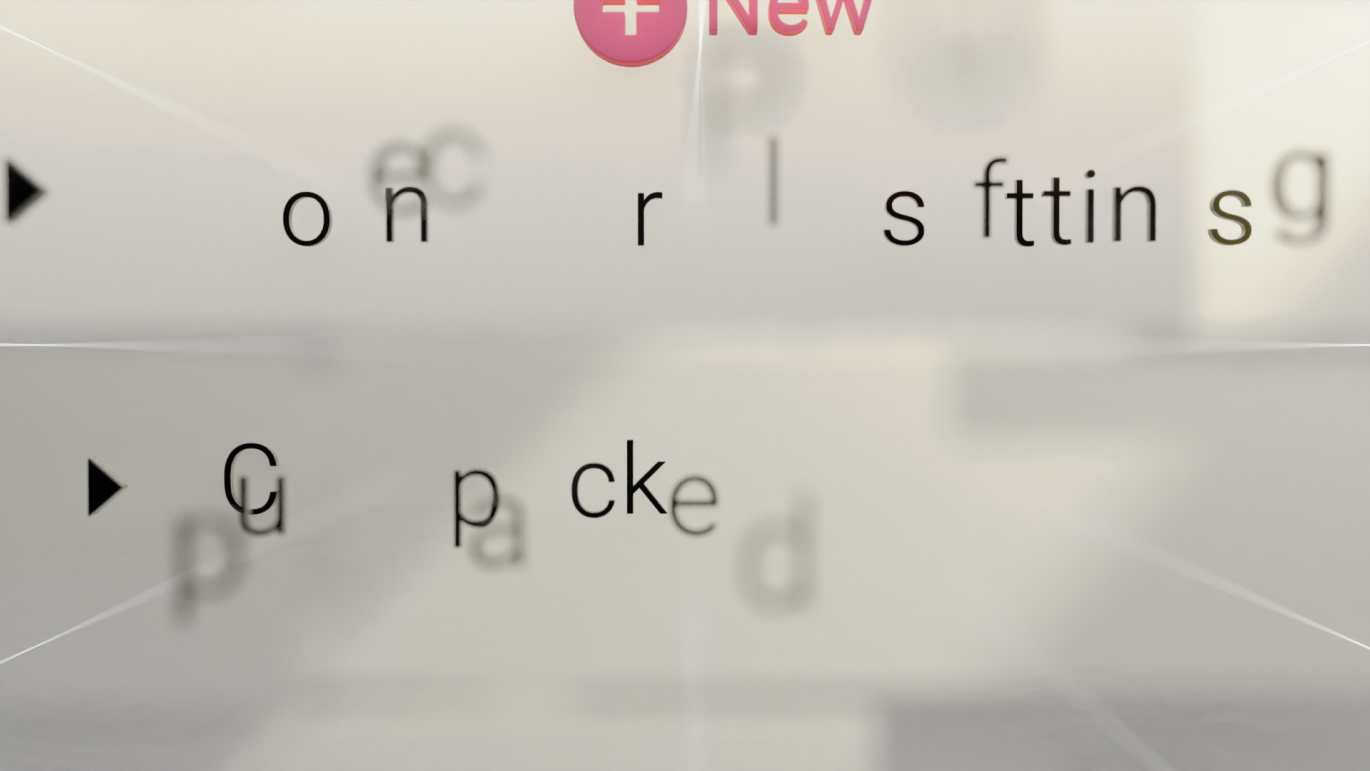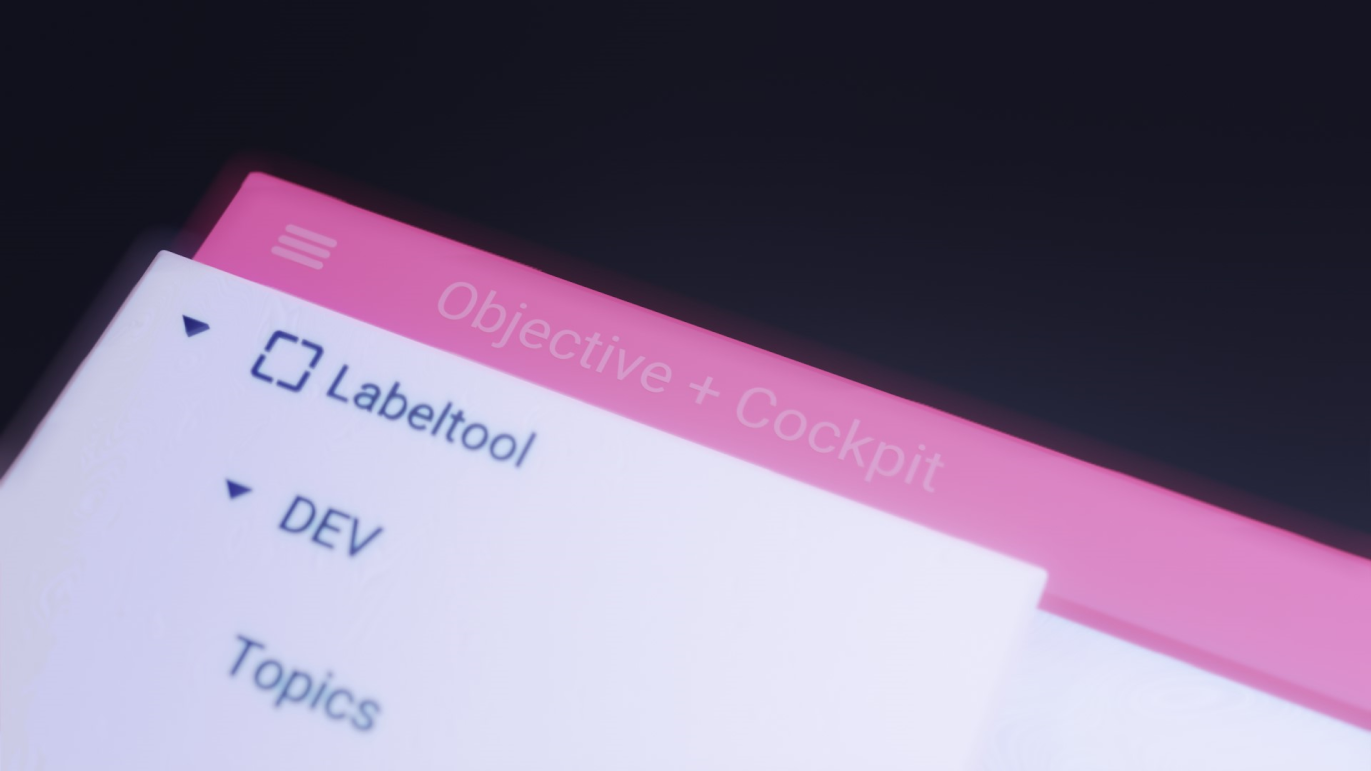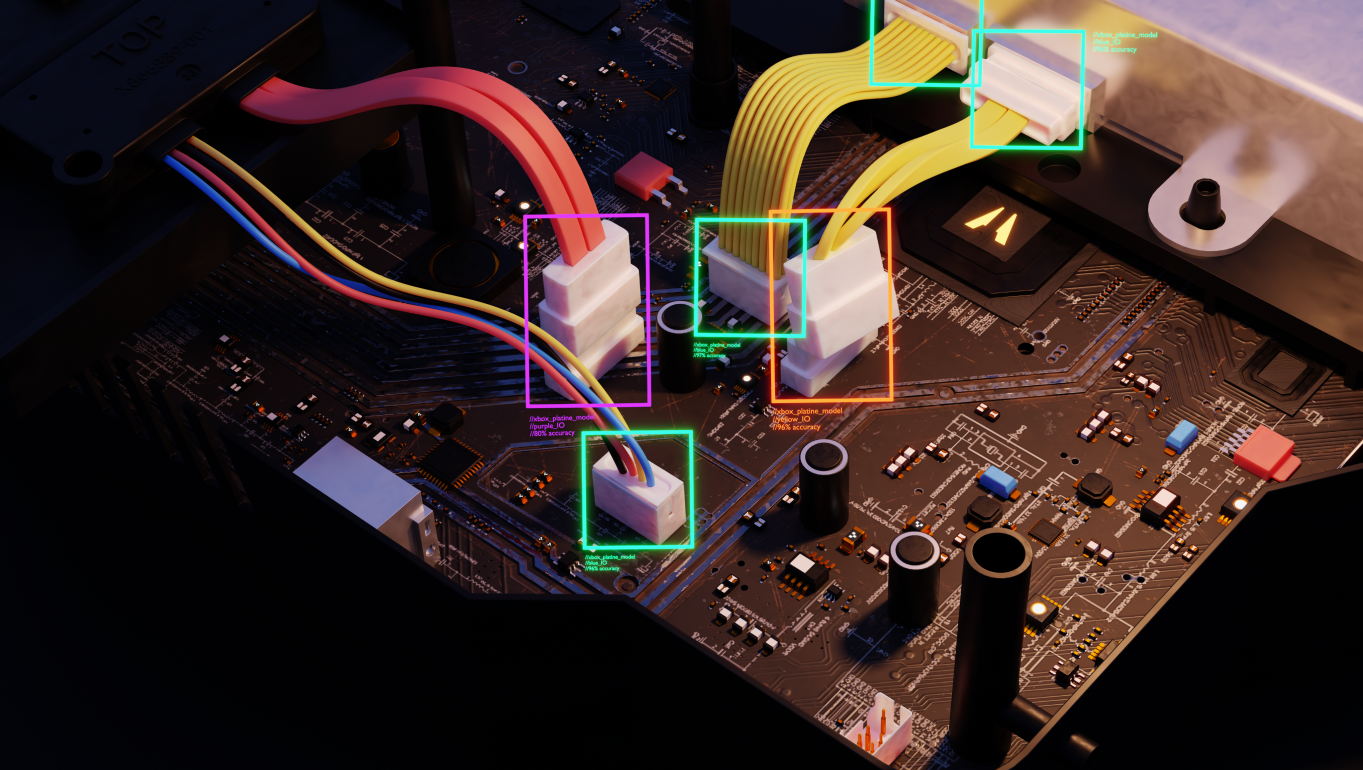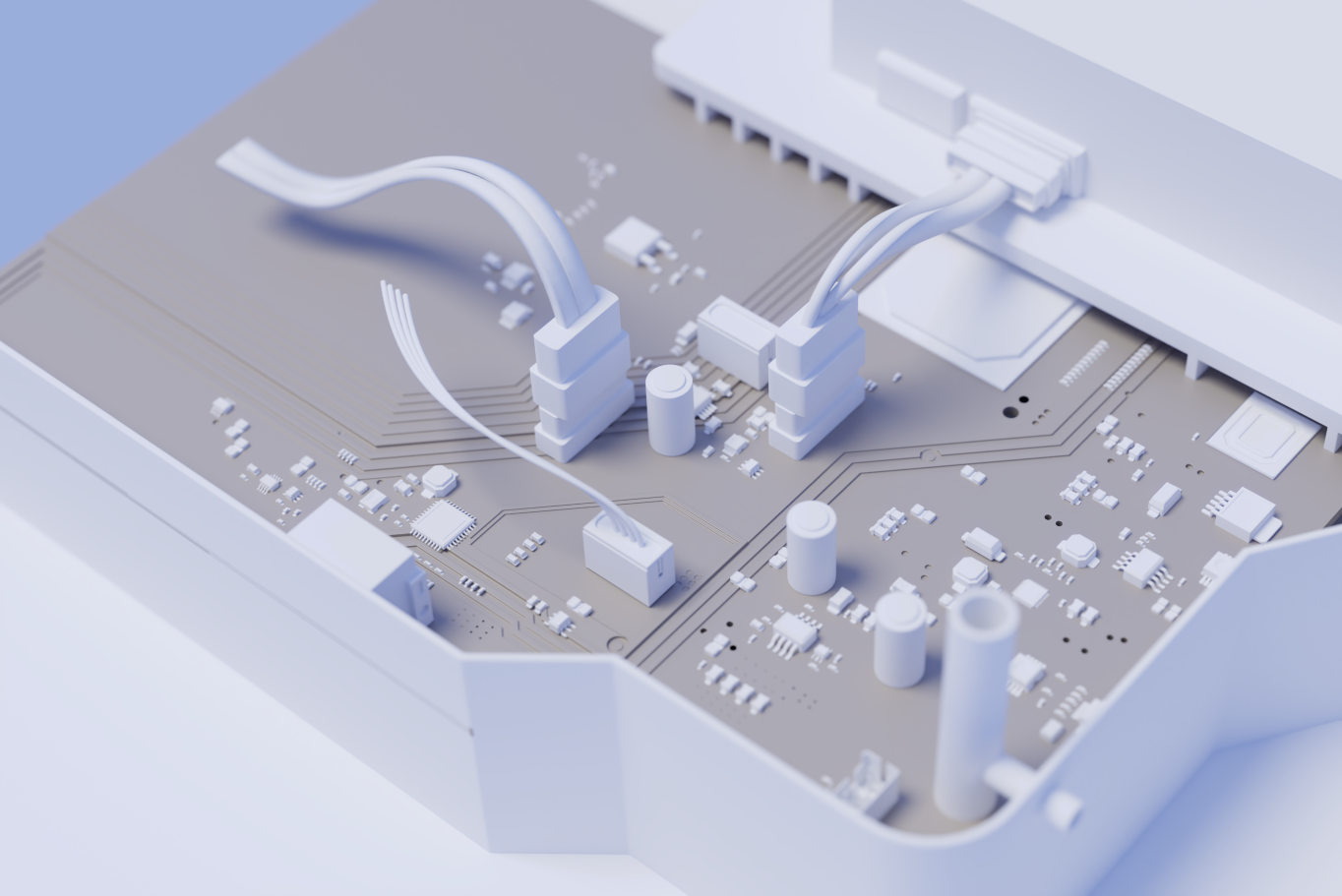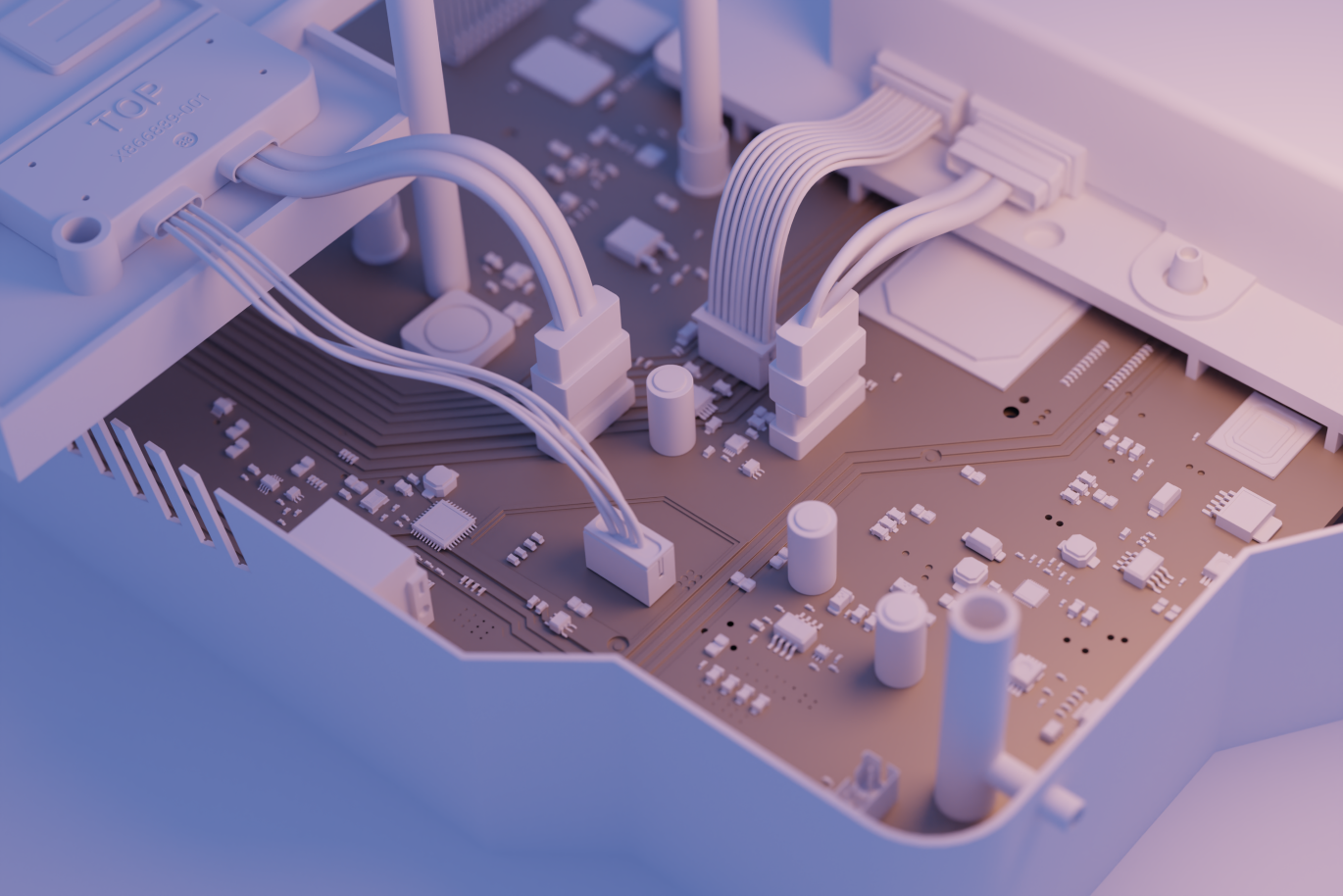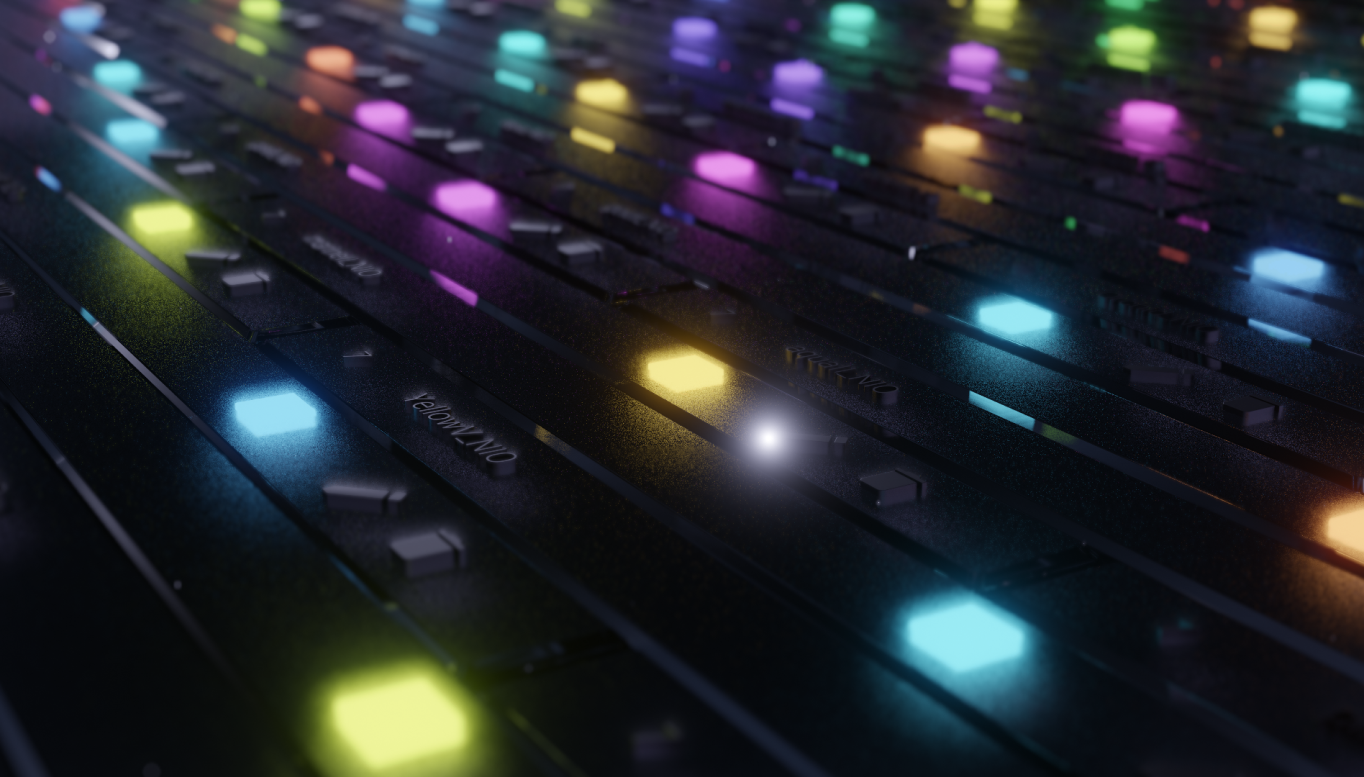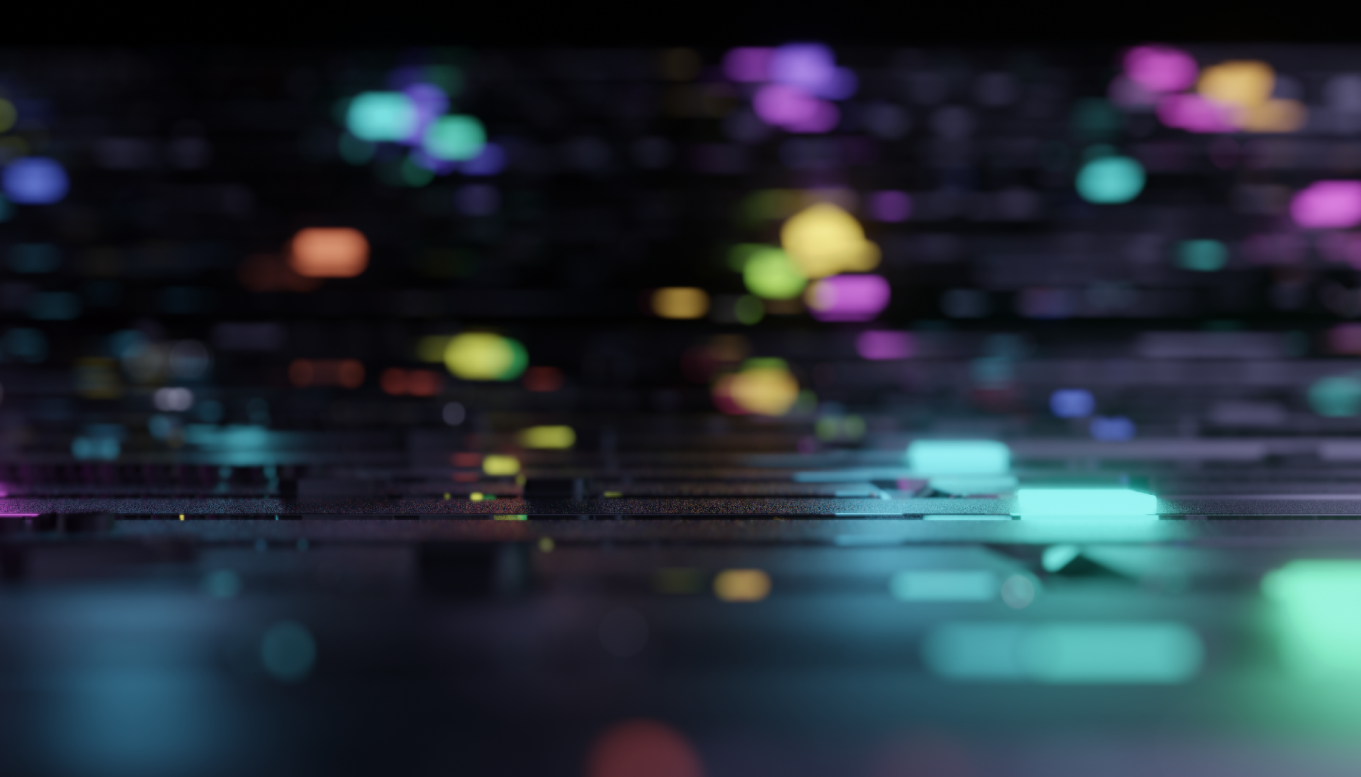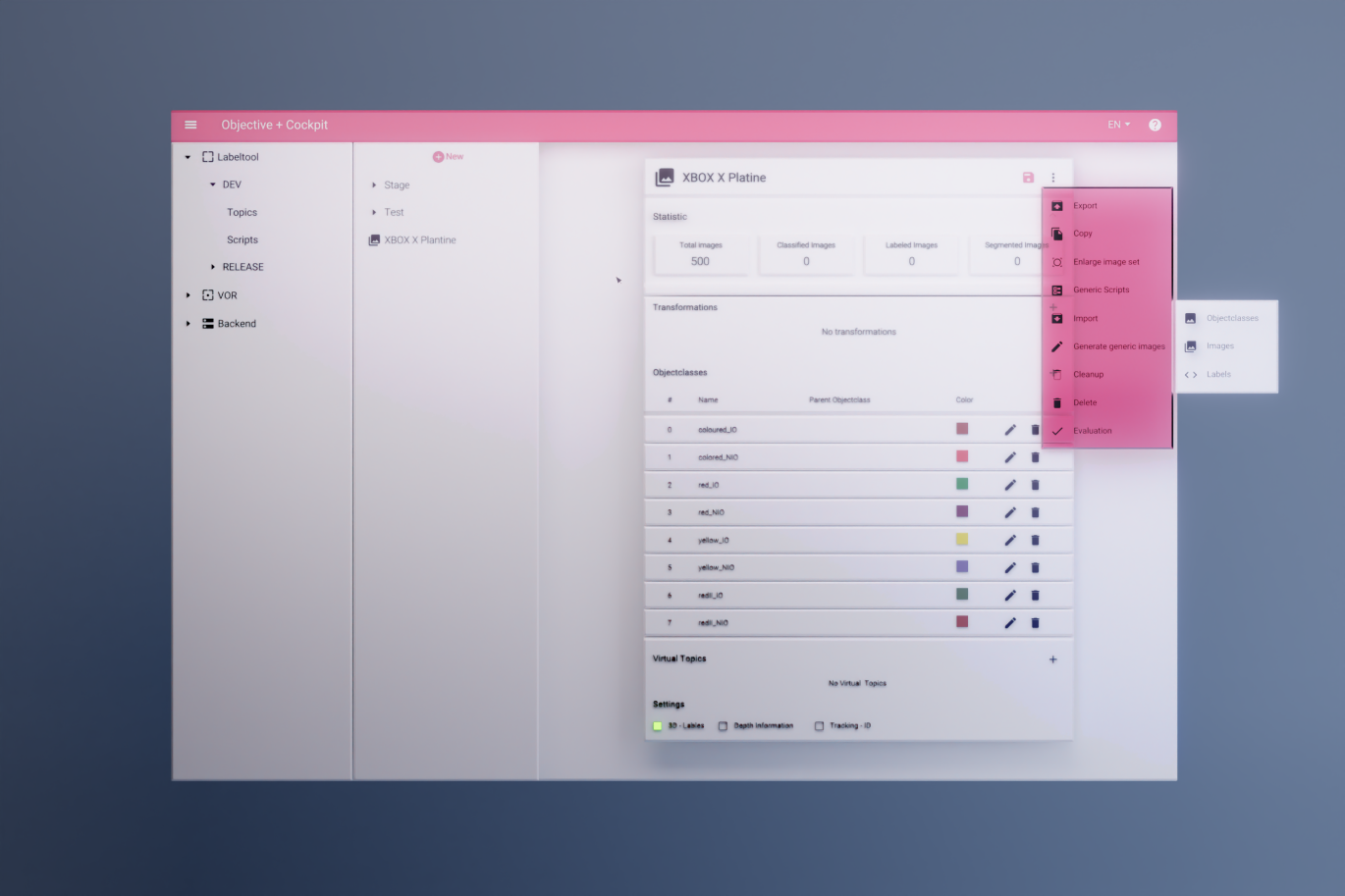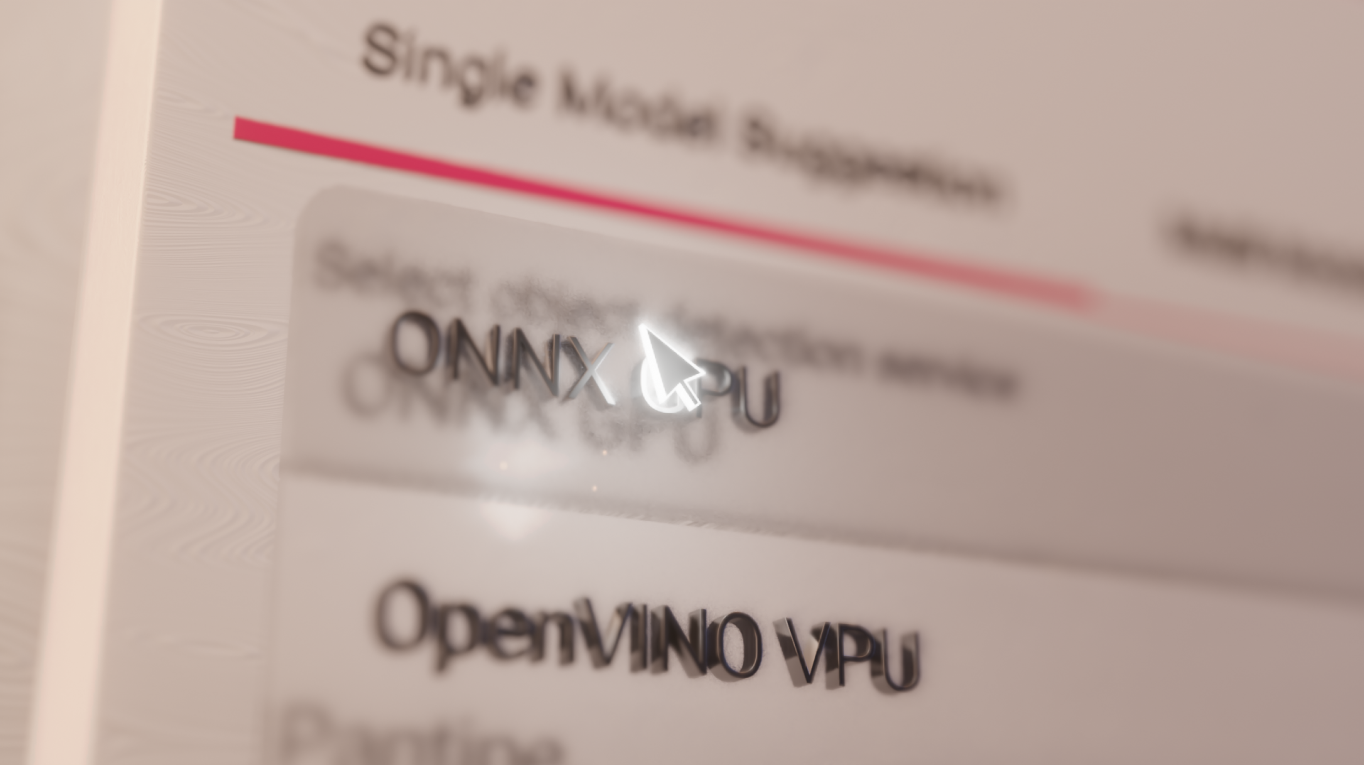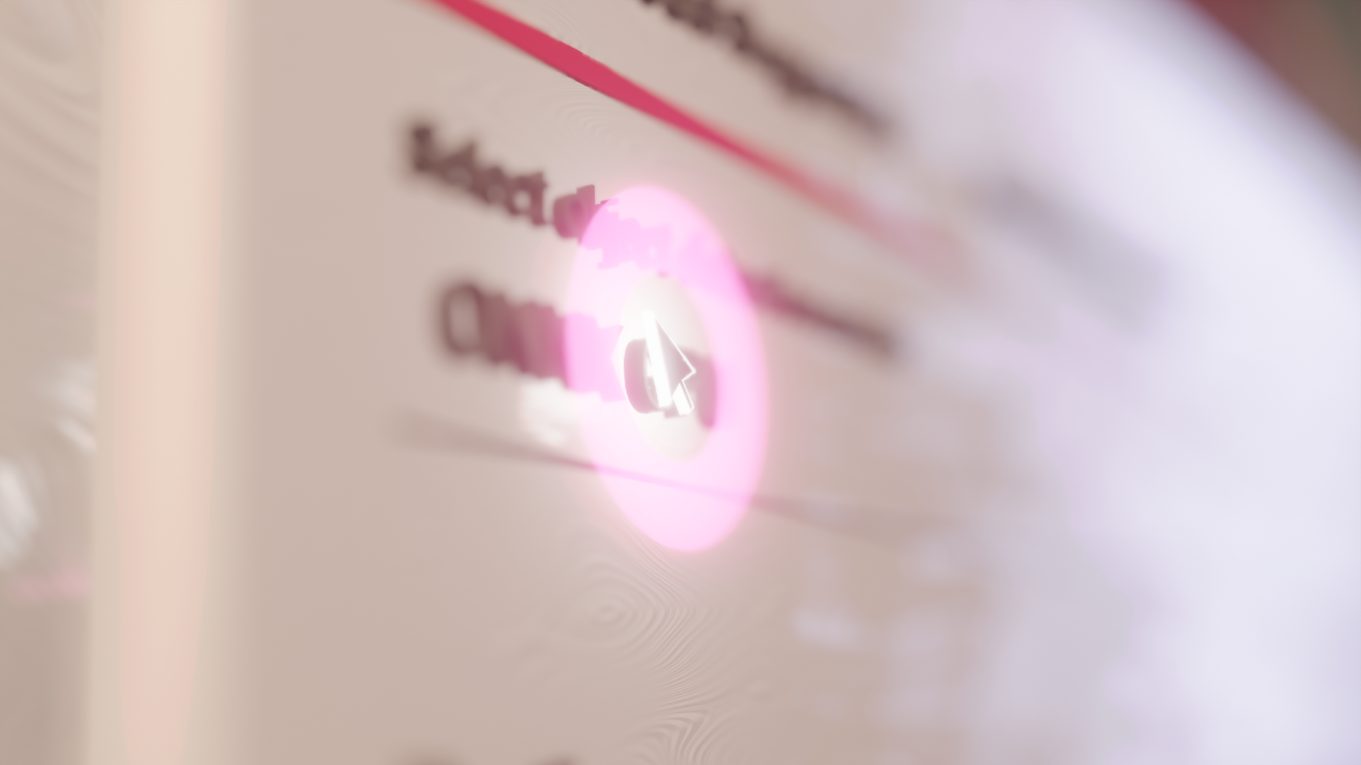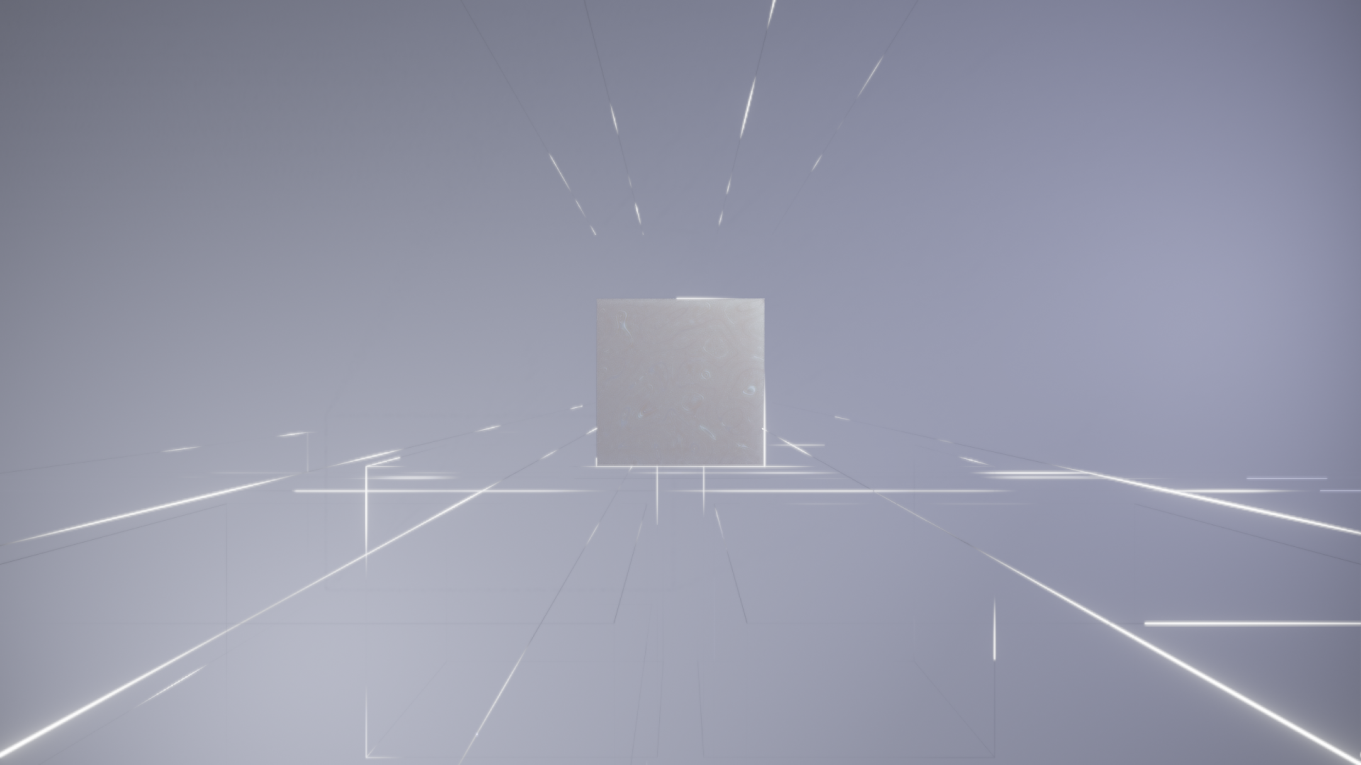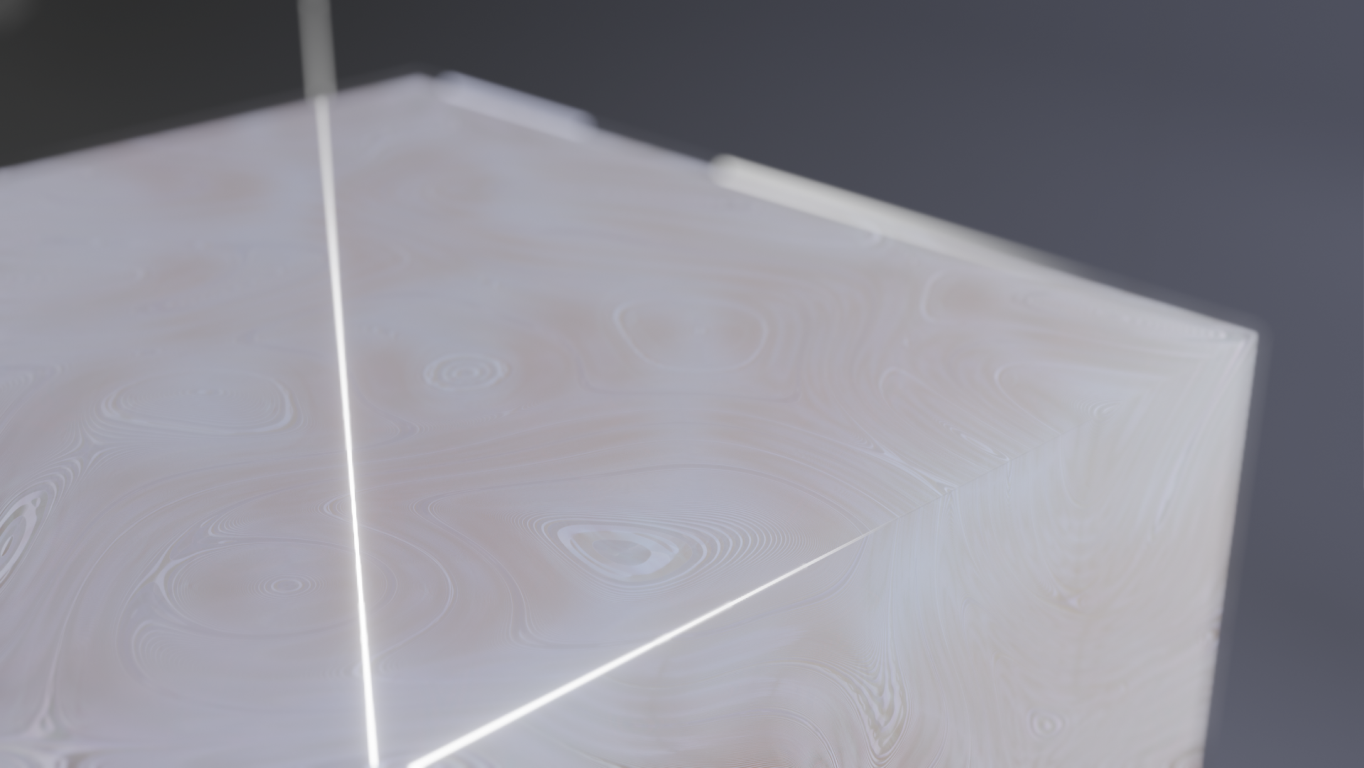INDUSTRIAL IMAGE RECOGNITION TOOLKIT
OBJECTIVE PLUS
Year//
2023
Software//
Substance Painter, Blender, Illustrator, Photohop, Premier Pro
Objective+ is a comprehensive quality control toolkit designed to revolutionize visual inspections through automation. It offers a diverse range of functions specifically tailored for industrial operations, equipping users with optimized methods for detecting, classifying, and segmenting optical data. This powerful software solution not only enhances efficiency but also ensures accuracy in visual inspections. With a user-friendly interface and modular design, Objective+ seamlessly integrates into company-wide collaborative workflows. It serves as a bridge between process supervisors and industry experts, facilitating effective communication and knowledge sharing. In anticipation of the launch, a compelling visualisation package centred around the software’s purpose, unique functions and overall potential was requested. This project outlines the captivating artistic outcomes and highlights my contribution to its development.
DESIGN PROPOSAL
MY OBJECTIVE
To showcase the software’s utility, and generate interest among potential users, a strategic approach was taken in crafting the visual package. This involved using simplistic 3D elements to communicate complex functions and was also used to illustrate a collation of different tools assimilating into a single UI. Classification and object detection were at the core of this project, both in manual labelling and in automated quality control. This is demonstrated through a concise walkthrough of a basic labelling procedure, showcasing its efficiency and accuracy - and later, the scalability.

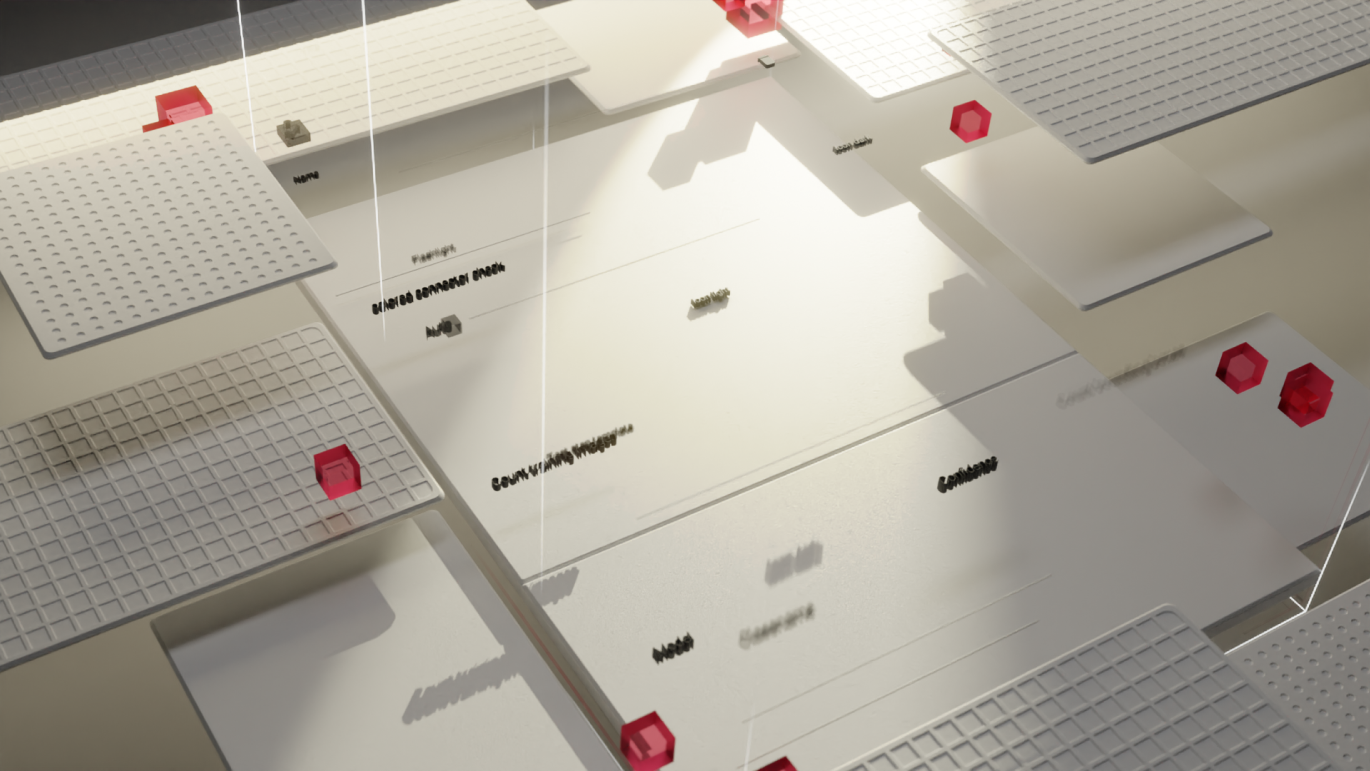
CGI WORKFLOW
MODELLING
The assets used were crafted using Blender and closely referenced existing PCB Boards to ensure a high level of accuracy and realism. Once a base mash had been defined, the aesthetics were modified to match the agreed agenda for consistency. Simultaneously, the development of the 3D Ui was guided by an iterative refinement process striving to achieve a blend between the honest software experience and a stylised artist's interpretation. Cycles render engine was then used to render the images following previous research and development done in the Monte Carlo project.
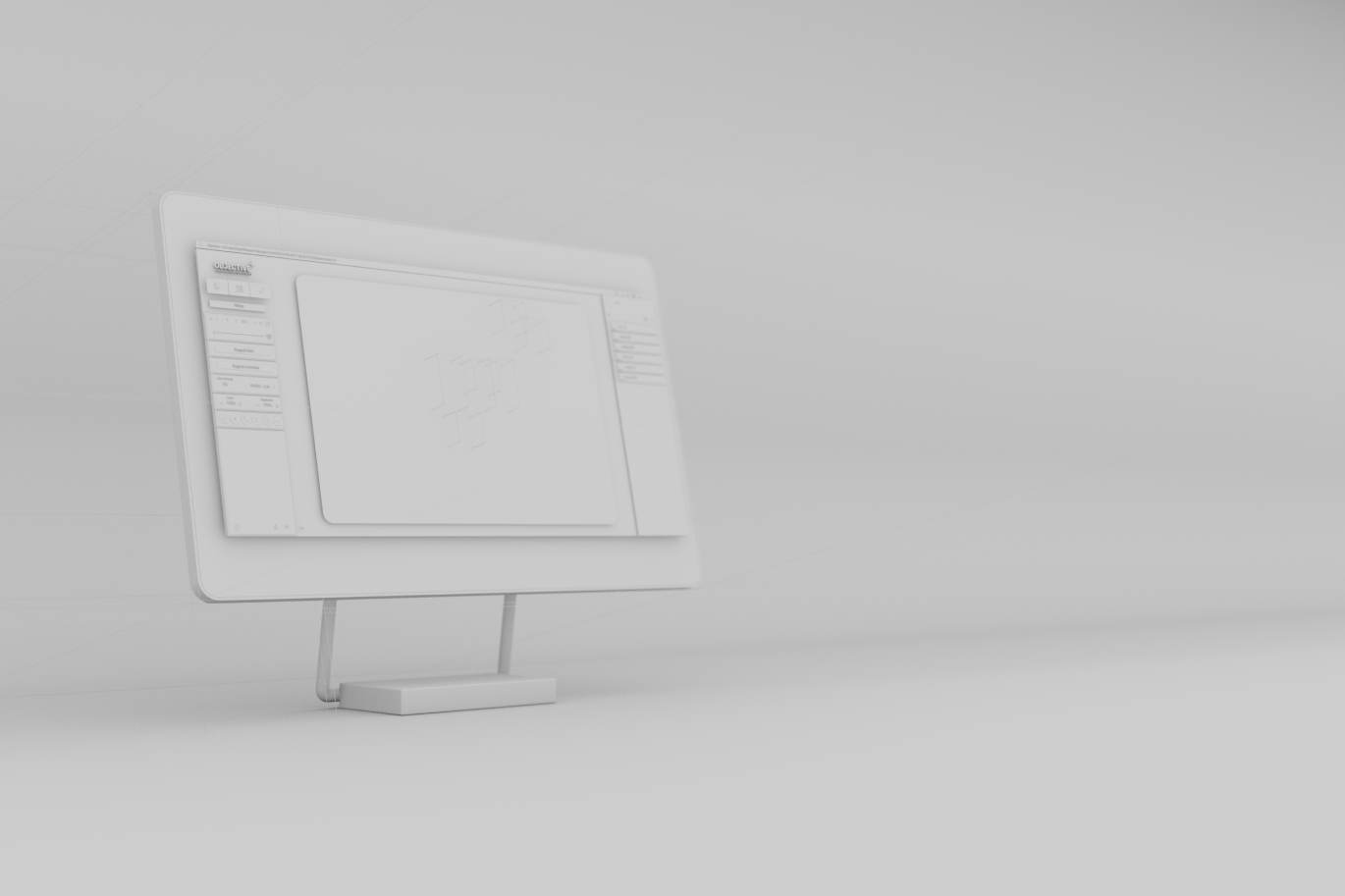
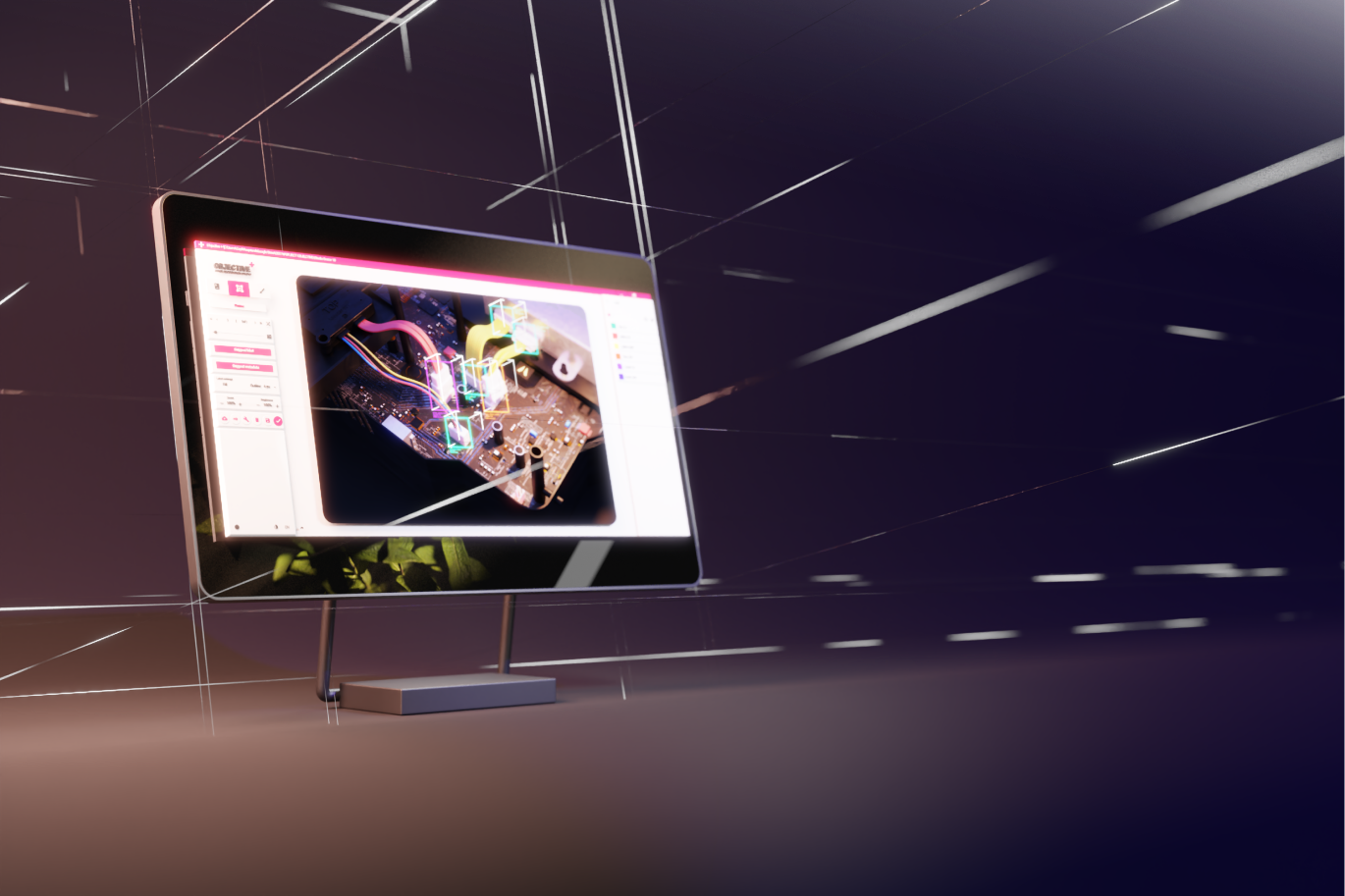
NARRATIVE THROUGH SYMBOLS
A SEA OF CUBES
Each label in the visual narrative is represented as a dynamic 3D pixel or voxel. It evolves and transforms as the story unfolds. The voxel starts its journey as a simple element and gradually gains complexity and sophistication through its interactions with various images and object detections. In the initial stage, the voxel transitions into a manually drawn 2D bounding box, symbolizing the human intervention and input required for precise labelling. As the story progresses, an automated labelling system takes over, showcasing the advancements in technology and the ability to streamline the labelling process. Finally, the voxel evolves into a fully realized 3D spatial prism, representing the real-world application and practicality of the software.
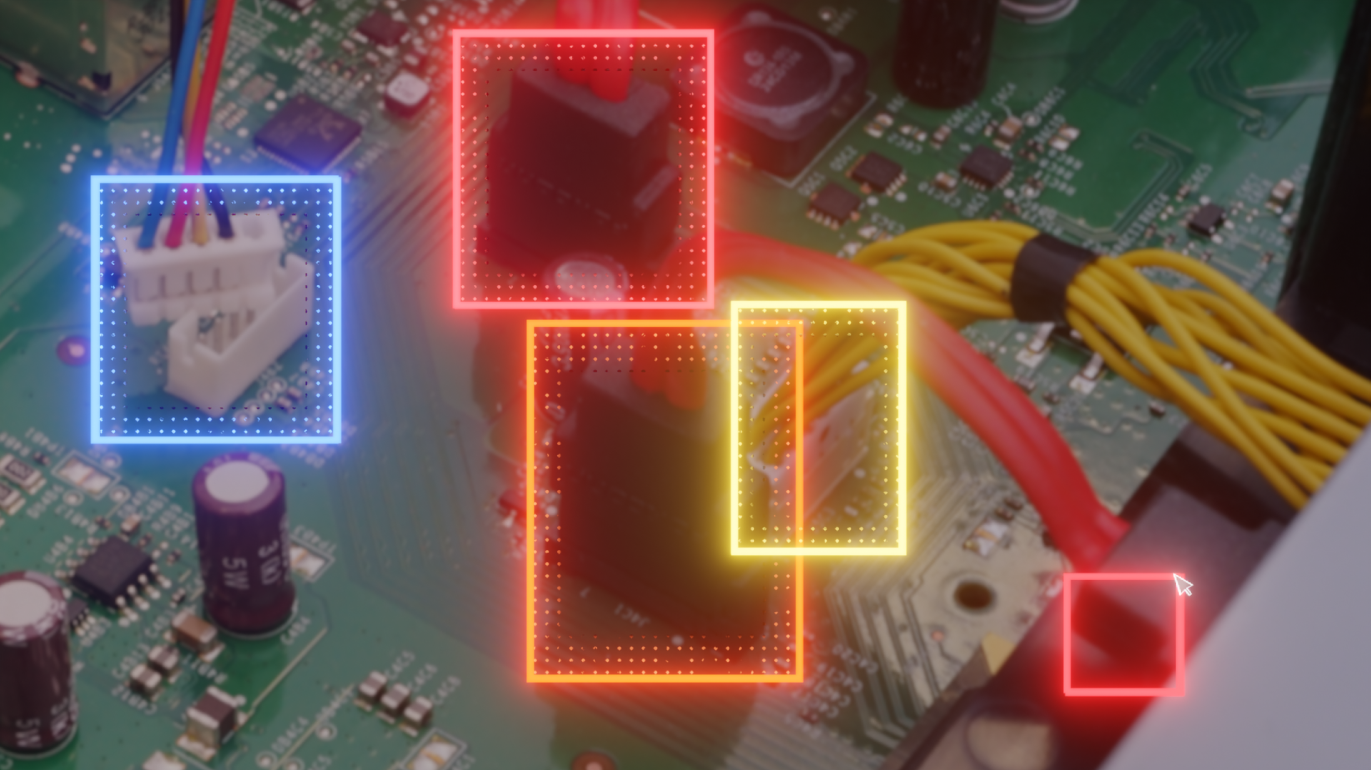
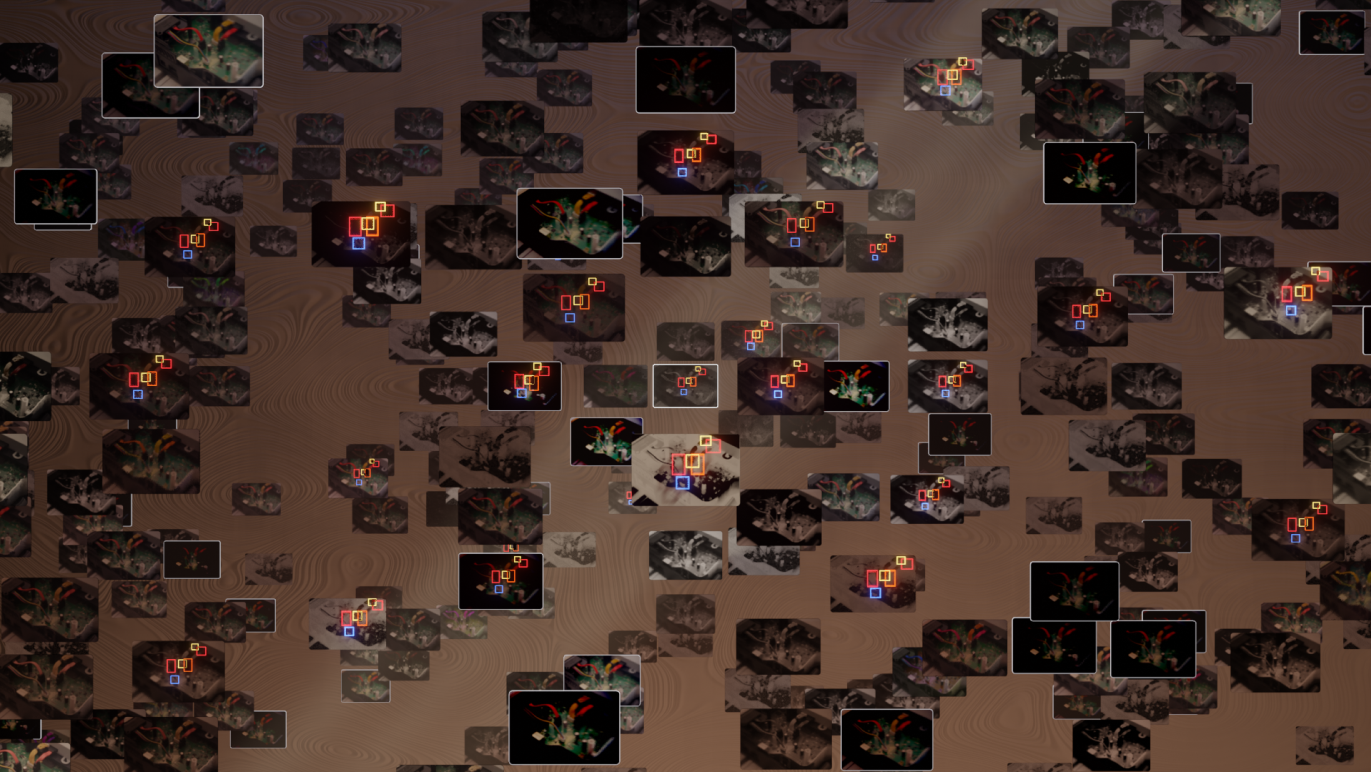

MOTION AND DESIGN
FLUID TRANSITIONS
The animation unfolds in four stages, seamlessly transitioning between key scenes: Introduction, Labeling, Training, and Application. A notable transition occurs from the Training stage to the Application stage, where the application flips around, and its silhouette transforms to adopt a new UI design. These fluid transitions guide viewers through different user workflow stages, ensuring engagement and immersion in the visual narrative. These carefully orchestrated transitions enhance the storytelling experience, creating a cohesive and captivating journey for the audience as we travel through the different GUIs
RIGGING AND WORKFLOW
REACTIVE COMPONENTS
To ensure flexibility, a series of reactive animation rigs needed to be built for this project. Custom reactive buttons, switches, and cascading sliders were meticulously designed to replicate their CSS counterparts. These rigs enabled swift scene blocking and facilitated proactive animation testing with minimal setup requirements. This approach afforded a highly flexible workflow and allowed me to spend more time on art direction rather than technical adjustments.
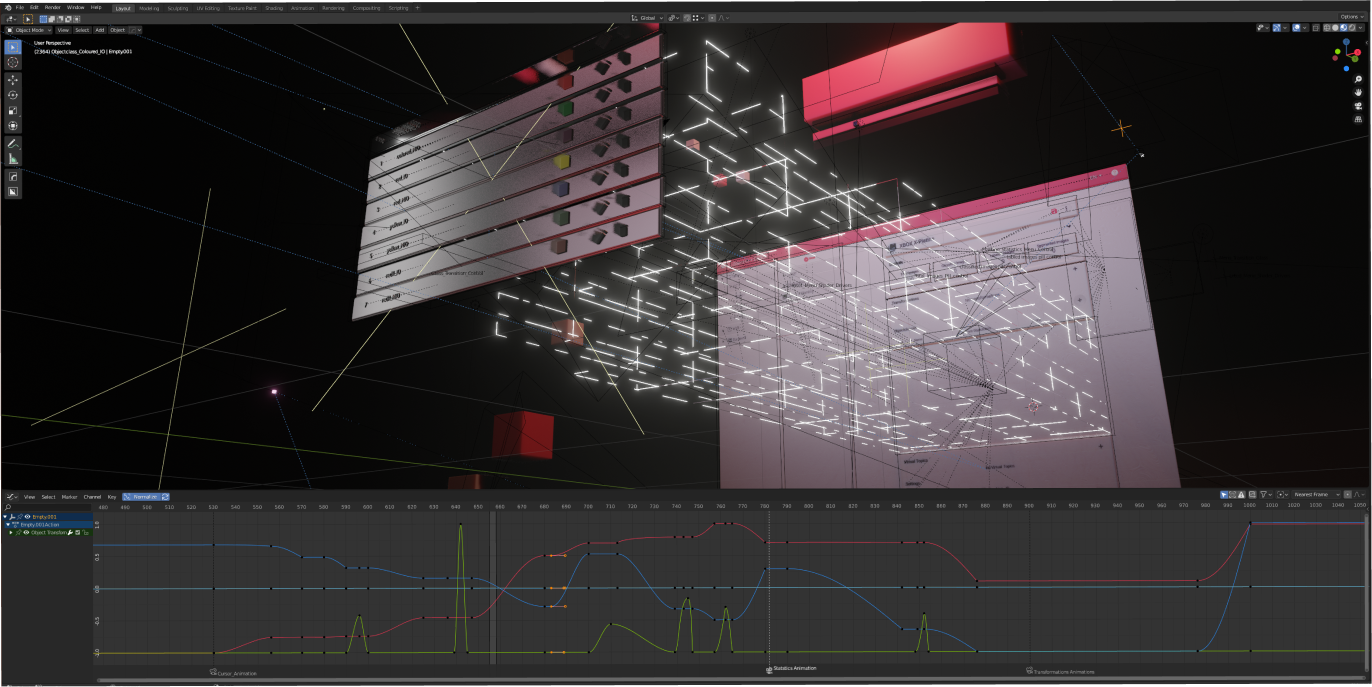
STYLE FRAMES + ART DIRECTION
DIGITAL EXPLORATIONS
Style framing is an invaluable tool during the conception stage, as it allows for the creation of singular, visually striking images that showcase a specific scene. These images serve multiple purposes, including establishing the desired style, mood, and composition of the final output. Additionally, style framing helps save time during the final compositing phase by setting up workflows and visual guidelines early on in the production pipeline.
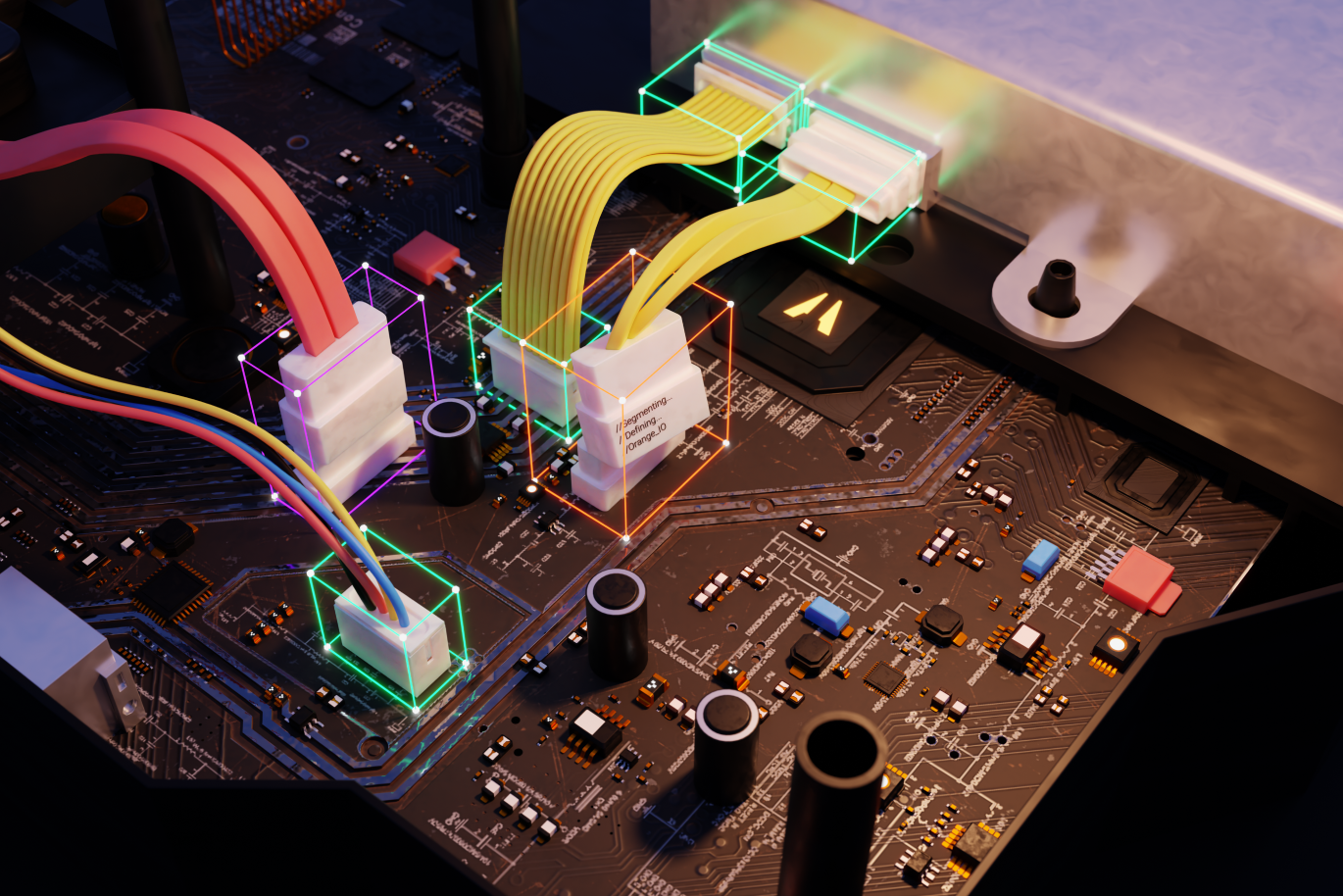
TITLE SLIDE
OBJECTIVE PLUS
Objective+ is a cutting-edge quality control toolkit that revolutionizes visual inspections in industrial operations. With its advanced AI capabilities and optimized methods for detecting, classifying, and segmenting optical data, Objective+ ensures accurate and efficient quality control processes. The user-friendly and modular design allows seamless integration within collaborative workflows, bringing in streams of data - a sentiment that led to the final title graphic for this project.



